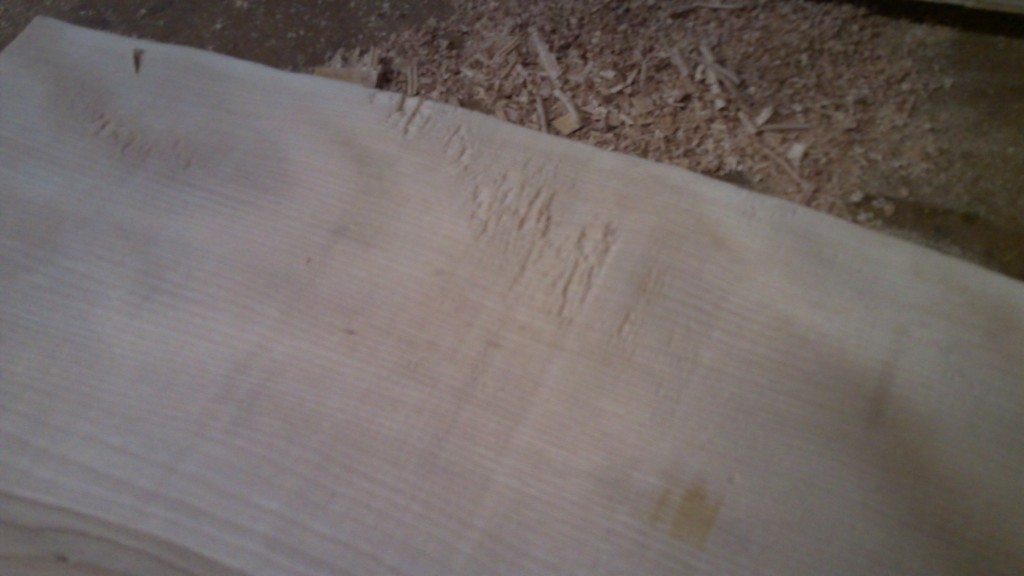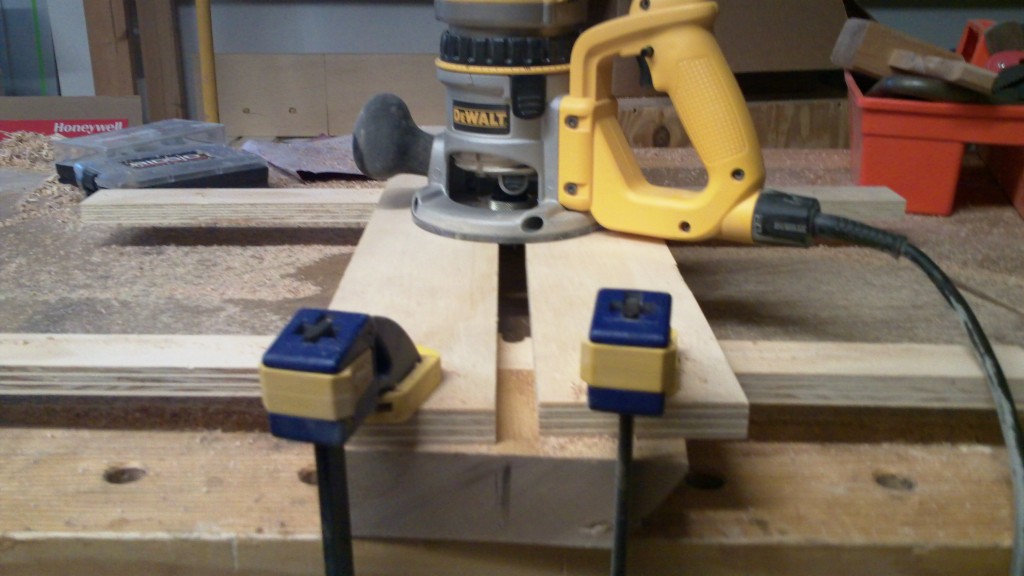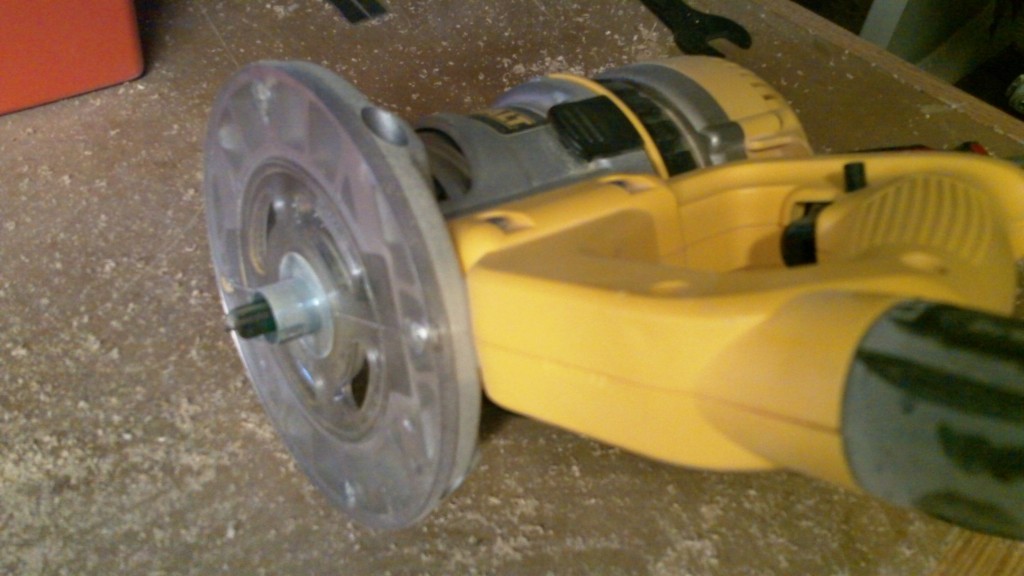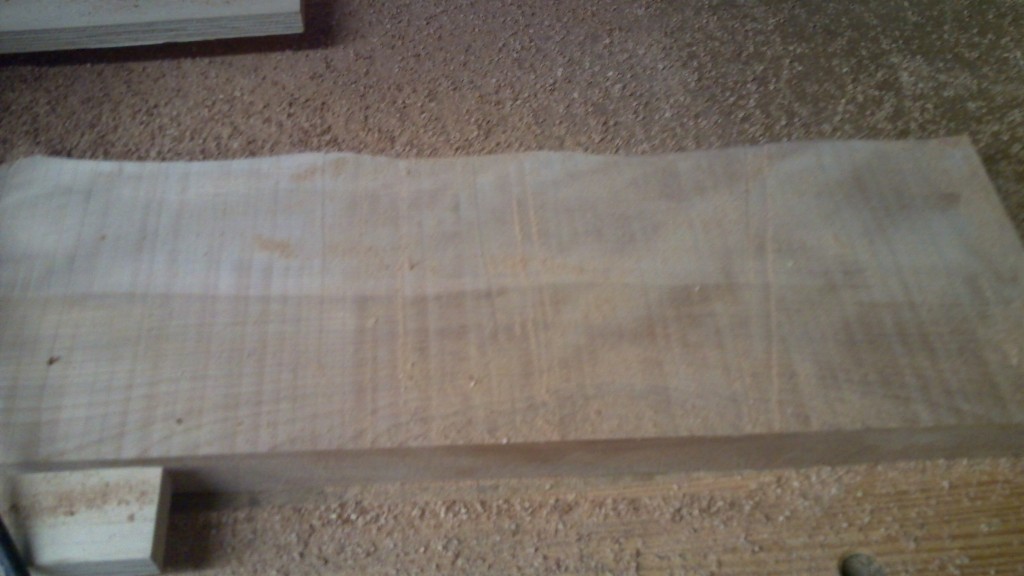One of the things I enjoy most about woodworking is jointing and planing boards. Think about it – you start with this rough, dull board that looks like something you wouldn’t put into a home construction project. When you are done, you have a gorgeous board you can build a masterpiece with.
Since I face and edge joint boards with a hand plane, the process is also a voyage of discovery. I can feel how that rough outer layer peels leaving a silky smooth surface behind.
But, sometimes, there are those boards that don’t behave well. Ironically, those are usually the boards that are the most beautiful, full of figure and character. This describes a board that was recently sent to me by Bell Forest Products. I was looking for a live edge slab, and the one they sent to me was beautiful – a slab of flame birch.
Now, flame birch is one heck of a board. Beautiful waving grain. Its beauty, alas, comes at a price. It’s one bear to surface.
Even with my super cool, heavy duty Veritas bevel up smoother set to a very fine cut, it still tore out like nobody’s business. Running the board through the planer – even with the finest cut – led to much more ugly tear out.
I thought I may have had to run down to the local hardwood supplier to get the board run through their wide belt sander, but they were closed the day I was free. Bummer. Thinking that I was completely out of luck, I went home and sat down for a glass of iced tea.
That’s when it hit me. Why not make a thickness jig for my router? Without looking at a plan, I grabbed some plywood scraps from the kitchen cabinet pull outs and puzzled it out on my own.
The whole jig involves two pieces of plywood nailed to two cross pieces. The two pieces that go across the board are held 3/4″ apart, just wide enough for a router bushing to fit between. This way, the movement of the router could be carefully controlled while I pushed the board under it. Under the cross pieces, I took some of the slab offcuts and used them as spacers.
I put a 1/2″ bit into the router and set the base up with a 3/4″ router bushing. I set the depth of cut until it just grazed the top of the board and then turned the router on.
Feeding the board from left to right, I cut row after row across the board. The tear out disappeared and the board ended up good and flat. What came out the other side was a board with some very fine router tracks, which were easily erased by a random orbit sander and some 100 grit sandpaper.
I would show you the final project, but I’m still building it and don’t want to spoil the surprise. However, when the boards are wild and unruly, now I know the secret of how to tame them in my shop.





Iced tea is an important tool for us woodworkers. I did the same thing with some wide panels recently, but didn’t have such good results. I did as you tried – took them to a local cabinet shop who had a wide belt sander.
I have ordered from Bell Forest Products twice and been very pleased. Saw flame burch used on a project in FWW once and loved it. Good luck with your project.
Most of My limited hand plane Skill (and several of my planes) are the result of a matched set of Flame Birch. I’m still not Absolutely sure the effort was worth it – but it can be a striking wood.
That is good thinking!! I would have never thought of doing that.
Now I know…just hope I’ll rember that trick when I need it!
Good luck with your project.
Rog
Mmmm, iced tea… can’t go wrong there!
Great Idea and a good way to solve the problem – I am adding it to my roster of tricks. The Ice Tea was not a bad idea either. Sometimes we need to step away for a minute or two and just let our brain do its thing on its own. Looking forward to seeing the completetd project.
What a great idea – I will definitely add it to my bag of tricks. Isn’t it amazing how when we step away from a project we can get really inspired ideas,
Nice! I may use this idea for my workbench to flatten it, because it won’t fit in my planer! I have a drum sander that fits 24″ boards (from General) which is awesome for handling stock that tears out easily. If it does that after a planer pass, I switch to the drum sander.
It was like $1,700 but I use it for glue-ups and so many other things that I don’t miss the money.